ASRock Core 100HT-BD : Bringing HTPCs to the Mainstream Market [UPDATED : Noise Issue]
by Ganesh T S on July 19, 2010 9:34 PM EST- Posted in
- Home Theater
- Arrandale
- ASRock
- Media Streamer
- Core i3
- HTPC
One of the most interesting aspects of the Arrandale platform is the fact that the GPU is integrated in the same package as the CPU. The GPU die also contains the PCIe and DDR3 memory controller. While the main CPU is fabricated in the 32nm process, the GPU die is fabricated in the 45nm process. Placing the GPU and CPU in the same package saves on power and also board costs. The graphics part of the GPU die in the package is an evolutionary version of the Intel G45 IGP. A comparison of the Intel HD Graphics in the Arrandales and the earlier G45 is provided below.

An interesting thing to note here is the availability of dynamic frequency scaling for the Arrandale GPU, which actually lowers the power consumption of the system. A 900 MHz GPU part on a typical Clarkdale system would up the TDP by 15W or more compared to the lowest end Clarkdale with a 733 MHz GPU. On the Core 100 HT-BD, however, overclocking doesn't require any special thermal arrangements. The higher frequencies kick in only when the load on the GPU becomes high.
We had earmarked the Clarkdales as the perfect HTPC platforms earlier this year. This Arrandale offering may actually tempt us to revise our opinions, given the form factor and the power profile. We will cover this in detail in the later sections. In the rest of this section, we will cover the features of the Intel HD Graphics engine, as it relates to HTPC users. Before going into the details, let us take a look at what Intel has improved in terms of video decode and processing in this iteration of their IGP.
DXVA Compatibility
Intel's support for DXVA came in for a lot of criticism during the G45 days. The paranoia inside the company made it impossible for open source enthusiasts to get hold of the special DXVA interface used by Intel. It used to be made available under NDA to various ISVs (Independent Software Vendors) such as Cyberlink, ArcSoft etc. Thankfully, things have been slowly changing for the better. Currently, most applications (except for VLC) are able to take advantage of the DXVA acceleration provided by the HD Graphics engine. The screenshot below gives us a quick idea of the DXVA capabilities of the Core i3-330M in the Core 100 HT-BD. It is interesting to observe that there is no VLD mode for VC-1, but we did observe 1080p VC-1 Blu-Rays play with less than 5% CPU usage on ArcSoft TMT. This just indicates that the interface to full acceleration mode for VC-1 is available only under NDA as of now.
HD Audio Bitstreaming
Right from its debut, the Arrandales have been able to bitstream HD audio from Blu-Ray discs played back through Cyberlink's PowerDVD or ArcSoft TMT. The Core 100 HT-BD is no different. We were able to play back all Blu-Rays with bitstreaming to the AV receiver, as the following screenshots show. In addition, hardware acceleration with Intel HD Graphics shows its class, with low CPU utilization being observed during playback. Despite the red spikes observed in the DPC Latency Checker program, we didn't notice any audio dropouts or stutters in the video.
Using the open source ffdshow Audio Decoder, HD audio can also be bitstreamed out of standalone MKVs and M2TS files. (More on this in the next section)
With the above features, Intel HD Graphics seems to be a winner, and the Core 100 HT-BD could potentially be the utopian HTPC that enthusiasts have been searching for. Is that really the case?
Driver Support - Intel Misses the Boat!
Since the release of the G45, videophiles have been clamouring for the support of 23.976 fps display refresh rate. Intel caved in and released a driver where you could choose 23 Hz in the graphics control panel. Unfortunately, this only results in a refresh rate of 24 fps. While watching videos encoded at 23.976 fps, this results in a small stutter every 40 seconds or so. Most people get past this by setting the refresh rate of their display to 60 Hz. However, dedicated enthusiasts still see this as a major shortcoming of the platform.
Another issue which has remained since the G45 days is the efforts taken to open up the DXVA specifications of the GPU for open source developers. Lot of progress has been made over the years, but full VC-1 decode acceleration remains elusive in applications like MPC-HC or VLC. As we discussed in the DXVA Compatibility subsection, the VC1_VLD mode which is commonly utilized by open source video decoders is absent. However, Intel's marketing team does indicate complete VC-1 decode acceleration. We can only surmise that this is made available for the Microsoft and other ISV decoders to make use of.
The drivers supposedly support advanced deinterlacing, but users do not have as much control over the algorithms used as they have when using ATI HTPC cards such as the Radeon 5xxx series. Noise reduction algorithms are also not transparent to the users. The frequency of driver updates is rather low, and issues continue to remain unaddressed.
If the end user can put up with these iGPU limitations (personally, I can), the Core 100 HT-BD is indeed a very good choice. This will be further elaborated in the next few sections.


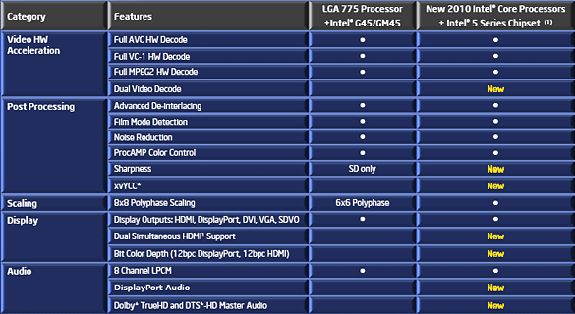
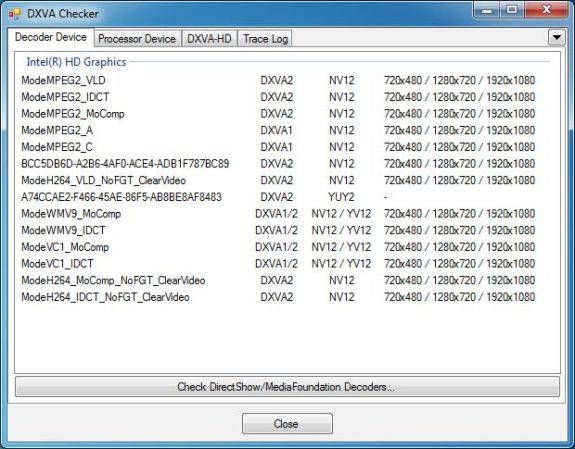
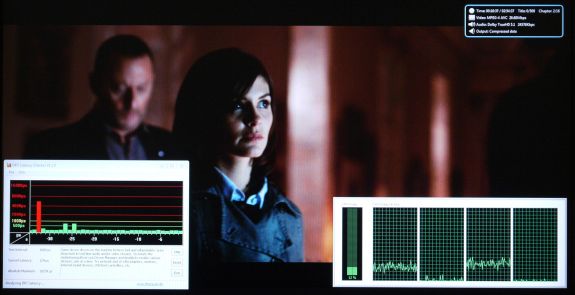
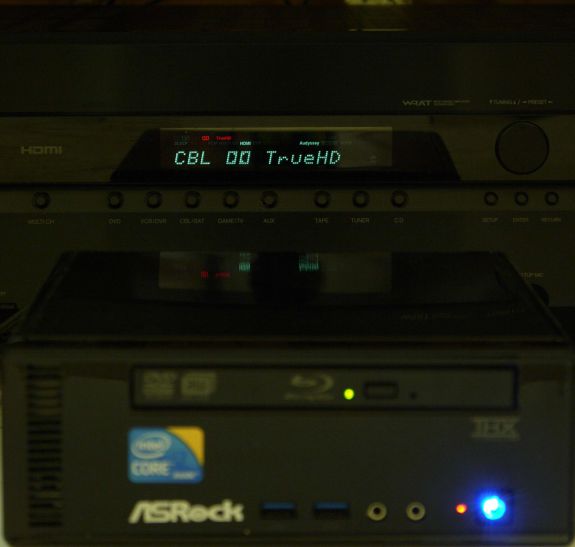
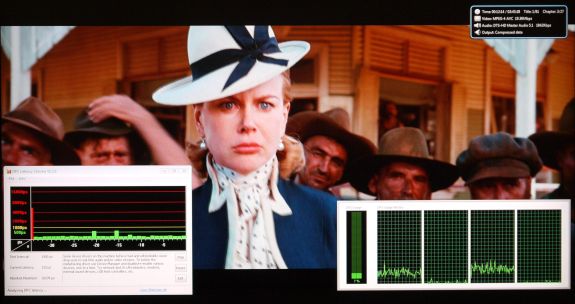
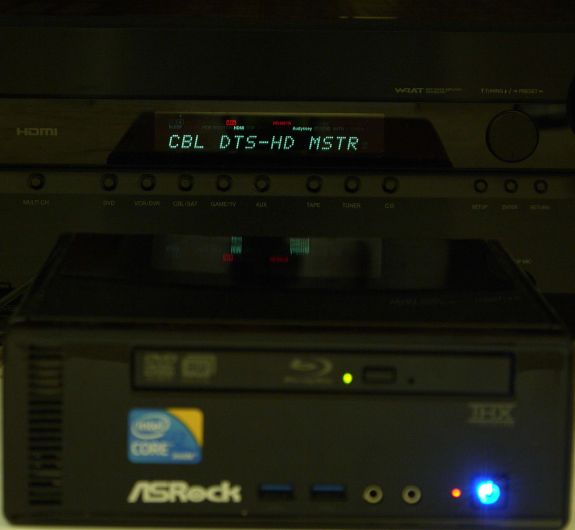








107 Comments
View All Comments
spddemon - Tuesday, July 20, 2010 - link
This system is capable of dobly truHD and DTS HD. A ION system is not capable of decoding of those sounds format...So this system will appeal heavily to someone that wants a small nettop type system with a BD and good encoding performance. With any nettop you are going to have to use NAS storage anyways, but this system will allow more internal expansion than most others.. But if you wanted to, you could pair it with an external drive cage.. I wouldn't want that in my living room / theater room though.
biggest problem with this system is price.. You can build a great system for a couple hundred less if you are willing to take hours of researching the components and integration. A successful HTPC build will take considerable more time in planning/research than a typical PC/Gaming PC Build....
If you are wanting a powerful, small, efficient, prebuilt nettop, this is the best out there right now!
That is really the only thing i wish Ganesh would of pointed out a little more clearly. The capabilities of the "iGPU" vs an ION.. with the growth of this field, I would love to see a followup review that would pit a custom built (but comparable build) HTPC.. like a Core i3 530 (or maybe an e7200) / H55 with and without an ATI/NVIDIA (non ION) card. This would really give some people something to look at as far as capabilities..
and really, who cares what the remote looks like.. get a Logitech harmony or some other home automation remote... most people will only care about if the IR or RF functionality is already there...
ganeshts - Tuesday, July 20, 2010 - link
spddemon,Stay tuned for more HTPC reviews in this space. Their performance will be pitted against this solution.
However, ION is passe right now. We will be testing with the ATI 5xxx series and upcoming Nvidia cards.
Furuno - Wednesday, July 21, 2010 - link
Upcoming nVidia cards...Hmm I wonder what it is... A low-cost version of fermi or another rebranding of GT2XX cards?
ganeshts - Wednesday, July 21, 2010 - link
We already published reviews of the GTX460 from the gaming perspective.The card is good from a gaming HTPC perspective because it also supports HD audio bitstreaming.
There are some rumours that Nvidia has lower priced cards coming out in the next 2 months, so we will cover them when they get released :) At the least, we will cover the GTX460.
spddemon - Wednesday, July 21, 2010 - link
Thanks for the updates Ganeshts!It looks like your time frame will be perfect for my new HTPC project.
I really hope Nvidia can get some low powered cards out to offer a true HTPC card that covers all the current HD formats/codecs.
mindbomb - Wednesday, July 21, 2010 - link
Ion can only bitstream LPCM, but I assume the atom cpu is powerful enough to decode truehd in libavcodec.So that only leaves DTS-HD MA as a problem.
ganeshts - Tuesday, July 20, 2010 - link
Goty,The user can always opt for a USB TV tuner.
If we had an expansion slot for a TV tuner inside this box, the unit wouldn't be based off the HM55 chipset, and wouldn't fit in the sub-50 W power envelop which is a coveted mark in this space.
Further, including a TV tuner in the box would drive up the cost of the system in some areas, as it would be taxed as an entertainment device, rather than a computer.
bearxor - Tuesday, July 20, 2010 - link
No one that is serious about using this as a HTPC is going to string USB TV tuners off this thing. You want 2 USB tuners hanging off the back of the machine? How about 4?My HTPC has 7 tuners total. 2xHauppage 2250's, 2xCats Eye 150's and a ATi DCT. Tell me exactly where I'm going to be able to put those on a machine like this.
There needs to be some kind of market differentiation between a HTPC and a Living Room PC. One is for serious use as a DVR and the other is to hook up to the TV and watch some videos/play games/surf the web/Facebook/chat, etc. They are two different markets.
ganeshts - Tuesday, July 20, 2010 - link
bearxor,You have got an impressive set up.
However, I believe your type of setup is more the exception rather than the norm. The sort of arrangement which will remain a niche for a long time to come. With the advent of IP streaming and availability of TV shows and live sports broadcasts online, I am not even sure people will require so many tuners.
I also think that your sort of setup isn't amenable to the silent, power efficient HTPC that people want (particularly from the viewpoint of media streamers and boxes such as the upcoming Google TV). The latter 'living room PC' that you mention has more potential to explode as a market for manufacturers to exploit, rather than the DVR-centric PC that you envisage.
hughlle - Tuesday, July 20, 2010 - link
Exactly, 7 tuners is hardly the norm. I make do without a single one on my HTPC, i have the likes of iplayer if i really feel inclined to drop into the fantastic realm that is daytime television :S